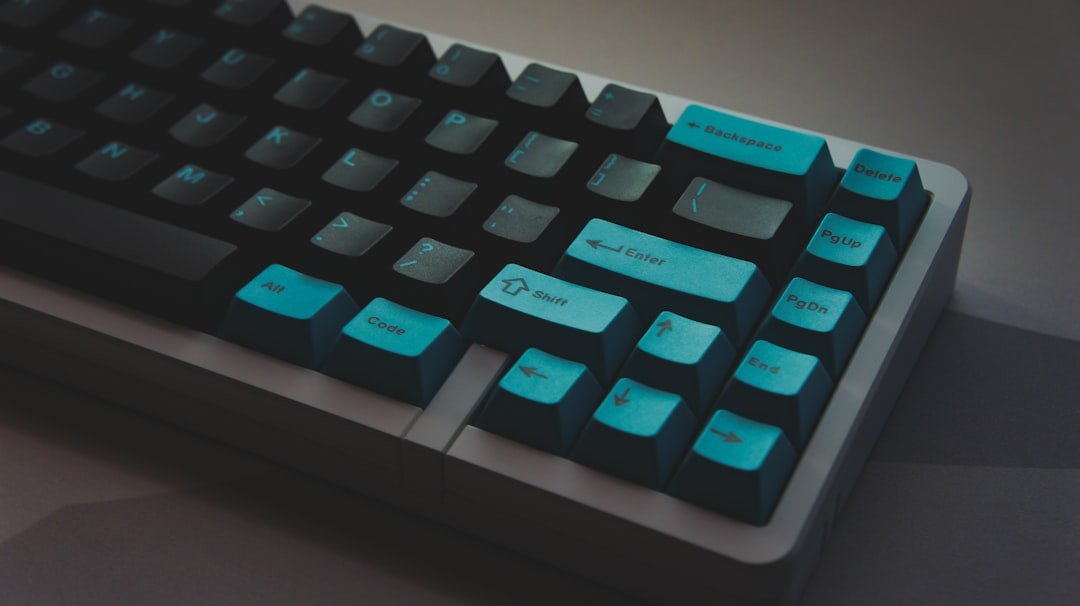Now Reading: Top Games for New Hardware Benchmarking
-
01
Top Games for New Hardware Benchmarking
Top Games for New Hardware Benchmarking

As a technology enthusiast, I have always been fascinated by the intricate dance between hardware and software. Hardware benchmarking serves as a critical tool in this relationship, allowing me to evaluate the performance of various components in a computer system. By running specific tests and measuring the results, I can gain insights into how well a piece of hardware performs under different conditions.
This process is essential for anyone looking to upgrade their system or build a new one, as it provides a clear picture of what to expect from the latest technology. Benchmarking is not just about numbers; it’s about understanding the capabilities and limitations of hardware. It allows me to compare different components, such as CPUs, GPUs, and RAM, and see how they stack up against one another.
With the rapid advancements in technology, staying informed about the latest benchmarks can help me make educated decisions when investing in new hardware. Whether I’m a casual gamer or a professional content creator, knowing how my hardware performs can significantly impact my experience and productivity.
Key Takeaways
- Hardware benchmarking is essential for evaluating the performance of new hardware components.
- Choosing the right games for benchmarking is crucial to accurately assess the capabilities of the hardware.
- Criteria for selecting games for new hardware benchmarking include graphics quality, performance optimization, and popularity among gamers.
- Top PC games for benchmarking graphics include titles like Metro Exodus, Shadow of the Tomb Raider, and Battlefield V.
- Top console games for benchmarking performance include titles like Red Dead Redemption 2, God of War, and Forza Horizon 4.
Importance of Choosing the Right Games for Benchmarking
When it comes to benchmarking hardware, the choice of games plays a pivotal role in obtaining accurate and meaningful results. Not all games are created equal; some are designed with high graphical fidelity and complex physics engines, while others may be more simplistic in their design.
Reflecting Real-World Usage
Choosing games that reflect real-world usage is crucial. For instance, if I primarily play graphically demanding titles, I want to ensure that my benchmarks reflect that experience. On the other hand, if I’m interested in competitive gaming, I might prioritize games that require high frame rates and low latency.
Aligning with Gaming Preferences
By selecting games that align with my gaming preferences, I can better assess how my hardware will perform in the scenarios that matter most to me.
Accurate Results
Selecting the right games for benchmarking ensures that I can effectively test the limits of my hardware and understand its performance across various scenarios.
Criteria for Selecting Games for New Hardware Benchmarking

When I set out to select games for benchmarking new hardware, I consider several key criteria to ensure that my results are both relevant and comprehensive. First and foremost, I look for games that are popular within the gaming community. Titles that have a large player base often receive regular updates and optimizations, making them ideal candidates for testing performance over time.
Another important factor is the graphical fidelity of the game. I prefer games that push the boundaries of visual quality, as they provide a more rigorous test for my hardware. Additionally, I consider the game’s engine and how well it utilizes system resources.
Games built on advanced engines like Unreal Engine or Frostbite tend to offer more demanding scenarios, allowing me to see how my hardware handles intensive tasks.
Top PC Games for Benchmarking Graphics
In my quest for the best PC games to benchmark graphics, several titles consistently stand out due to their stunning visuals and demanding performance requirements. One such game is “Cyberpunk 2077.” This open-world RPG not only boasts breathtaking graphics but also features a complex environment filled with dynamic lighting and intricate details. Running benchmarks on this game allows me to see how well my GPU handles ray tracing and high-resolution textures.
Another excellent choice is “Red Dead Redemption 2.
The vast open world filled with diverse environments provides ample opportunities to push my hardware to its limits. By benchmarking these titles, I can gain valuable insights into how well my system performs under demanding graphical conditions.
Top Console Games for Benchmarking Performance
When it comes to console gaming, there are several standout titles that serve as excellent benchmarks for performance testing. “The Last of Us Part II” is one such game that showcases the capabilities of modern consoles. Its rich storytelling combined with stunning visuals makes it an ideal candidate for assessing frame rates and load times on both PlayStation 4 and PlayStation 5.
Another noteworthy title is “Forza Horizon 5.” This racing game not only delivers breathtaking graphics but also demands high performance from the console’s hardware. The dynamic weather system and expansive open world provide a comprehensive test of both CPU and GPU capabilities. By benchmarking these games on consoles, I can better understand how well they utilize the available resources and deliver an optimal gaming experience.
Best Games for Stress Testing New Hardware

Stress testing new hardware is an essential part of ensuring stability and performance under extreme conditions. For this purpose, I often turn to games that are known for their demanding requirements. “Crysis Remastered” is a classic example; its reputation for pushing hardware to its limits makes it a go-to choice for stress testing.
The game’s lush environments and advanced graphical features allow me to see how well my system copes with intense graphical loads. Another game that excels in this area is “Microsoft Flight Simulator.” This title is not only visually stunning but also incredibly resource-intensive due to its realistic simulation of flight dynamics and weather conditions. By running benchmarks on these demanding titles, I can assess how my new hardware performs under pressure, ensuring that it can handle even the most challenging gaming scenarios without compromising stability.
Games with Advanced Settings for Benchmarking
When benchmarking new hardware, I appreciate games that offer advanced settings to fine-tune performance metrics. “Shadow of the Tomb Raider” is one such title that provides a plethora of graphical options, allowing me to adjust settings like texture quality, shadow resolution, and anti-aliasing levels. This flexibility enables me to create specific scenarios that test different aspects of my hardware’s performance.
Similarly, “Metro Exodus” offers an extensive range of graphical settings that can be adjusted to push my system further. The game’s use of advanced lighting techniques and detailed environments makes it an excellent choice for benchmarking. By experimenting with various settings, I can identify the optimal configuration for my hardware while also understanding its limitations.
Benchmarking Games with Realistic Environments
Realistic environments play a significant role in benchmarking hardware effectively. Games like “Assassin’s Creed Valhalla” provide expansive worlds filled with intricate details that demand high levels of graphical fidelity. The lush landscapes and bustling cities allow me to assess how well my hardware handles complex environments while maintaining smooth performance.
Another title worth mentioning is “Battlefield
Games with Intensive CPU Usage for Benchmarking
While graphics cards often steal the spotlight in benchmarking discussions, CPU performance is equally important. For this reason, I seek out games that are known for their intensive CPU usage. “Total War: Three Kingdoms” is an excellent example; its large-scale battles require significant processing power to manage numerous units on-screen simultaneously.
Another title that demands CPU resources is “Cities: Skylines.” This city-building simulation challenges my hardware by simulating complex systems like traffic flow and citizen behavior. By benchmarking these CPU-intensive games, I can gain insights into how well my processor handles demanding tasks while ensuring smooth gameplay.
Benchmarking Games with Ray Tracing and DLSS Support
As technology continues to evolve, ray tracing and DLSS (Deep Learning Super Sampling) have become essential features in modern gaming. To benchmark these technologies effectively, I often turn to titles like “Control.” This game showcases stunning ray-traced reflections and lighting effects that push my GPU to its limits while providing an immersive experience. Another noteworthy title is “Cyberpunk 2077,” which not only supports ray tracing but also utilizes DLSS to enhance performance without sacrificing visual quality.
By benchmarking these games, I can evaluate how well my hardware performs with cutting-edge technologies while also understanding the impact on frame rates and overall gameplay experience.
The Future of Benchmarking Games for New Hardware
As I reflect on the future of benchmarking games for new hardware, it’s clear that advancements in technology will continue to shape this landscape. With each new generation of consoles and graphics cards, the benchmarks will evolve alongside them, providing fresh challenges and opportunities for evaluation. As developers push the boundaries of what’s possible in gaming, I anticipate seeing even more demanding titles emerge that will require innovative approaches to benchmarking.
Moreover, as gaming becomes increasingly integrated with technologies like virtual reality and cloud gaming, the criteria for benchmarking will expand beyond traditional metrics. I look forward to exploring how these developments will influence the way we assess hardware performance in the years to come. Ultimately, staying informed about the latest trends in gaming and technology will empower me to make informed decisions when it comes to upgrading or building new systems tailored to my gaming needs.
If you’re interested in exploring the world of esports, you may want to check out this article on the top esports teams of 2025. It provides insight into the competitive gaming scene and showcases some of the best teams in the industry. Additionally, if you’re looking for games that can run smoothly on low-spec PCs, you might want to read These articles offer valuable information for gamers looking to benchmark new hardware or explore different gaming options. Benchmarking games are video games that are used to test the performance of new hardware, such as graphics cards and processors. These games are often chosen for their ability to push hardware to its limits and provide consistent and reliable performance metrics. Benchmarking new hardware with games is important because it provides real-world performance data that can be used to compare different hardware configurations. This data can help users make informed decisions about which hardware to purchase based on their specific gaming needs. Some of the best games to benchmark new hardware include titles that are graphically demanding and can stress both the CPU and GPU. Examples of popular benchmarking games include “Metro Exodus,” “Shadow of the Tomb Raider,” “Assassin’s Creed Odyssey,” and “Cyberpunk 2077.” When choosing benchmarking games, it’s important to consider factors such as the game’s graphical fidelity, its ability to stress the CPU and GPU, and its popularity among gamers. Additionally, it’s important to choose games that are well-optimized and provide consistent performance across different hardware configurations. While benchmarking games are primarily used to test the performance of new hardware, they can also be used for other purposes such as stress testing, performance tuning, and troubleshooting. Additionally, benchmarking games can be used to compare the performance of different hardware configurations and settings.FAQs
What are benchmarking games?
Why is it important to benchmark new hardware with games?
What are some of the best games to benchmark new hardware?
What factors should be considered when choosing benchmarking games?
Can benchmarking games be used for purposes other than testing hardware?



























